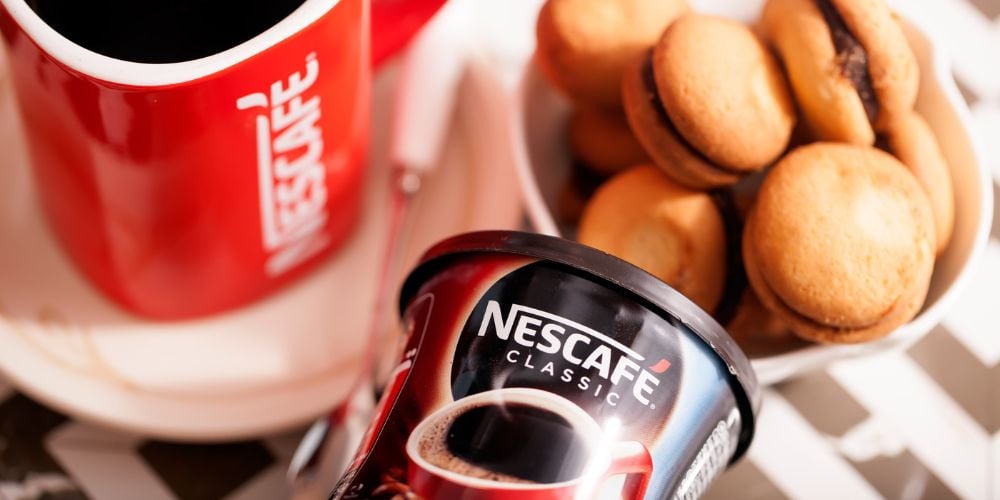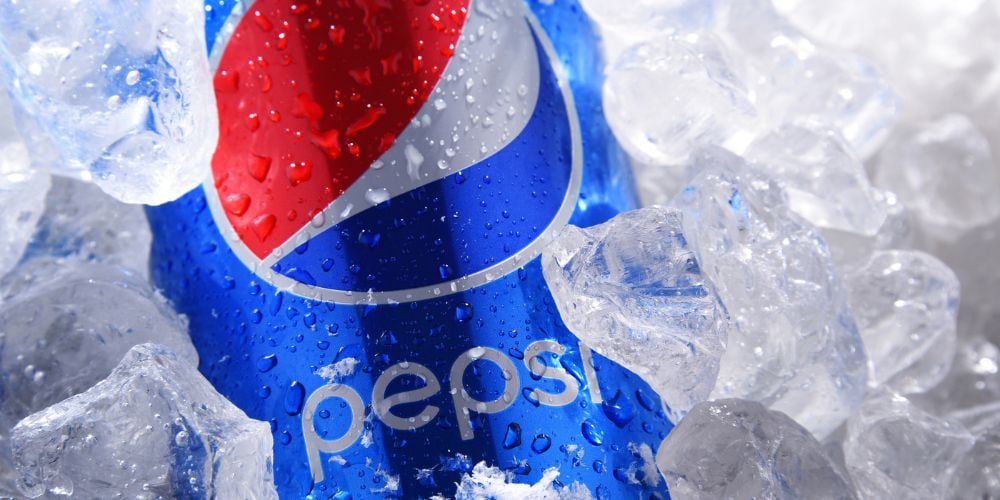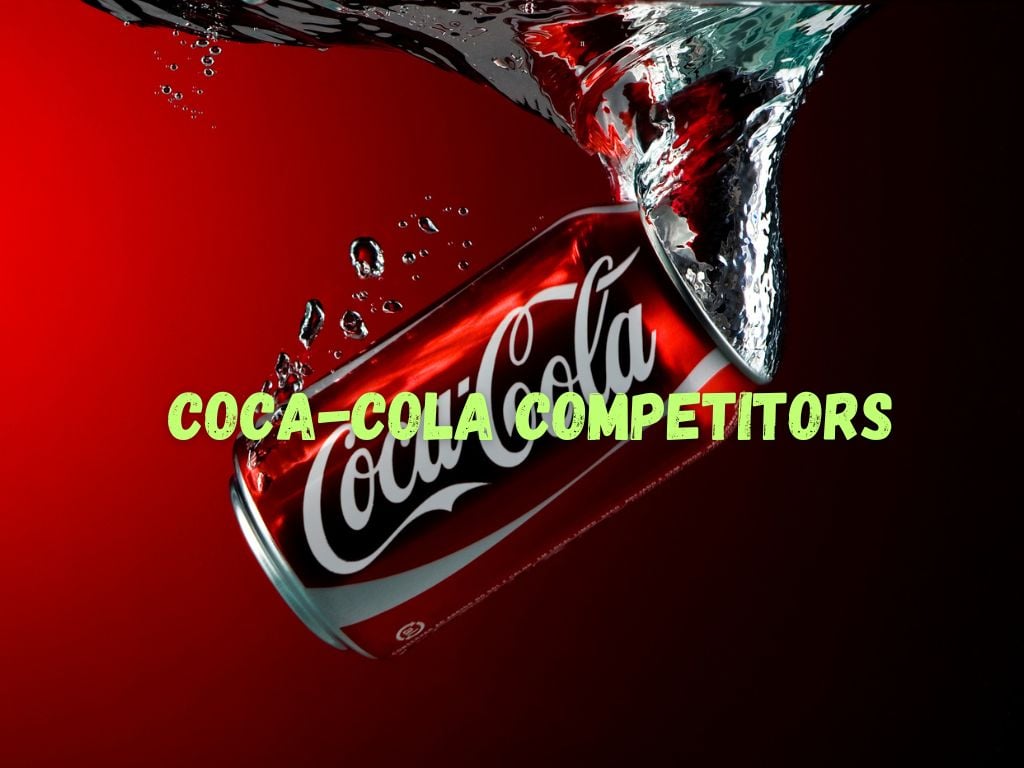Coca-Cola has long been hailed as a leader in the beverage industry, captivating millions of consumers worldwide.
However, it’s important to explore the competitive landscape and understand the alternatives available to consumers.
In this article, we will take a deep dive into the top 10 Coca Cola competitors and alternatives, analyzing their strengths and market presence.
By examining key players such as PepsiCo, Nestle, and Red Bull, we can gain a better perspective on the industry leaders that challenge Coca-Cola’s dominance.
Top 4 Coca Cola Competitors: An Analysis
PepsiCo
PepsiCo, one of Coca-Cola’s biggest rivals, offers a diverse set of beverage brands including Pepsi, Mountain Dew, Gatorade, and Tropicana.
With a strong focus on brand differentiation and innovative marketing campaigns, PepsiCo has managed to secure a significant market share, particularly in North America.

Nestle
Nestle, known primarily for its food products, also maintains a strong presence in the beverage industry.
Offering popular brands like Nescafe, Nesquik, and Perrier, Nestle appeals to consumers seeking quality and variety.
By leveraging their extensive distribution networks, Nestle has successfully carved out a competitive position in the market.
Red Bull
While not a direct cola competitor, Red Bull has captured the energy drink market, gaining widespread popularity with their unique marketing strategies and brand image.
Red Bull’s distinctive taste, combined with its association with extreme sports and adrenaline-fueled events, has helped it amass a dedicated and loyal consumer base.
Keurig Dr Pepper
Keurig Dr Pepper, a merger between Keurig Green Mountain and Dr Pepper Snapple Group, boasts an impressive lineup of brands such as Dr Pepper, Snapple, 7UP, and more.
With a diverse product portfolio spanning carbonated beverages, juices, and flavored teas, Keurig Dr Pepper presents a formidable challenge to Coca-Cola’s market dominance.
Strengths and Differentiation Factors
Product Offerings
PepsiCo’s strategy of diversifying its product offerings beyond colas has been instrumental in capturing a larger market share.
By expanding its portfolio to include a wide array of beverages such as sodas, sports drinks, and fruit juices, PepsiCo has effectively catered to different consumer preferences.
This diversification enables the company to target various segments of the market, attracting a diverse range of consumers.
For instance, their sports drink brand, Gatorade, appeals to athletes and fitness enthusiasts, while their fruit juice brand, Tropicana, targets health-conscious consumers seeking natural and nutritious options.
PepsiCo’s expansion into non-cola products has allowed them to capitalize on shifting consumer trends, particularly the growing demand for healthier and more functional beverages.
This strategic move has not only increased PepsiCo’s market share but also enhanced their brand perception as a company that can cater to a broader range of preferences.
By offering a wider variety of products, PepsiCo has positioned itself as a one-stop solution for consumers seeking a range of beverage options.
Brand Positioning
Nestle’s brand positioning strategy focuses on quality and sustainability, which resonates with health-conscious consumers. Nestle has established a reputation for providing high-quality beverages that align with consumers’ preferences for better-for-you options.
Nestle’s commitment to sustainable sourcing and ethical production practices has also resonated with consumers, reinforcing its brand as a responsible and trusted choice.
Nestle’s strong focus on nutritional value has allowed them to differentiate themselves from competitors like Coca-Cola. By emphasizing the nutritional benefits of their beverages, Nestle appeals to consumers who prioritize health and wellness.
For example, their brand Nesquik promotes its milk-based beverages as a nutritious option for children, positioning it as an alternative to sugary drinks.
Nestle’s ability to pivot their brand positioning towards healthier options has opened up opportunities for growth and positioned them as a legitimate alternative to Coca-Cola.
Their emphasis on quality, sustainability, and nutritional value has allowed Nestle to carve out a niche for themselves in the market.

Competitors like PepsiCo and Keurig Dr Pepper have successfully gained ground on Coca-Cola by utilizing strategic acquisitions and partnerships to expand their market share.
PepsiCo’s acquisition of various brands has allowed them to diversify their product portfolio and increase their market presence. Notable acquisitions include Gatorade, Tropicana, and Quaker Oats.
These acquisitions have enabled PepsiCo to extend their reach and appeal to a wider range of consumers, cementing their position as a major competitor to Coca-Cola.
Keurig Dr Pepper’s merger between Keurig Green Mountain and Dr Pepper Snapple Group has combined the strengths of both companies, resulting in a diverse product portfolio that includes popular brands like Dr Pepper, Snapple, and 7UP.
This merger has expanded their distribution networks and increased their market share, posing a significant challenge to Coca-Cola’s dominance.
By leveraging acquisitions and partnerships, PepsiCo and Keurig Dr Pepper have been able to combine their resources, enhance their product offerings, and solidify their positions as formidable competitors to Coca-Cola.
This strategic approach has allowed them to gain market share and increase their competitive presence in the beverage industry.
Competitive Landscape in the Beverage Industry
The beverage industry is constantly evolving, shaped by emerging trends and market dynamics. Understanding the landscape is crucial for both consumers and businesses. Here are some key factors to consider:
Market Trends
Changing consumer preferences, health concerns, and increased demand for innovative products have significantly influenced the beverage industry. Companies that can adapt and respond to these trends are better positioned to compete and meet consumer expectations.
Emerging Competitors
Smaller, niche players are also making their mark in the beverage industry. Craft soda and natural drinks have gained popularity among consumers looking for unique flavors and healthier alternatives.
These emerging competitors pose opportunities and challenges for established brands like Coca-Cola.
To gauge the competition faced by Coca-Cola, it’s important to analyze consumer preferences and brand loyalty:
Global Market Presence
Coca-Cola’s global reach is undeniable, with a presence in over 200 countries. However, regional preferences can vary significantly, and competitors like PepsiCo have managed to establish a foothold in certain markets.
Understanding these nuances can help businesses tailor their marketing strategies to better resonate with local consumers.

Consumer Preferences and Brand Loyalty
Brand loyalty plays a crucial role in the beverage industry. While Coca-Cola has a strong and dedicated consumer base, competitors have successfully attracted consumers through compelling marketing initiatives and product innovations.
Consumer preferences, including taste, packaging, and social responsibility, can sway purchasing decisions.
Niche Competitors and Market Challenges
Aside from the major competitors, niche players also present unique challenges:
Examining Niche Competitors
Craft soda brands and natural beverages have gained traction among consumers seeking artisanal and healthier options.
These niche players are often characterized by unique flavors, sustainable sourcing, and a commitment to quality. While their market share may be smaller, they provide valuable alternatives to consumers.
Addressing Market Challenges and Opportunities
For Coca-Cola and its competitors, industry challenges such as increased health awareness, sugar regulations, and sustainability concerns require constant innovation and adaptation.
By diversifying their offerings, exploring new market segments, and focusing on sustainable practices, companies can navigate these challenges and create new opportunities.
Conclusion
While Coca-Cola remains a prominent player in the beverage industry, their competitors have proven their ability to capture market share and cater to diverse consumer preferences.
Understanding the strengths and strategies of these competitors is crucial for businesses and consumers alike.
By exploring the market landscape and analyzing the offerings of key competitors like PepsiCo, Nestle, and Red Bull, individuals can make informed choices and venture beyond the realm of Coca-Cola.
In conclusion, the beverage industry is a dynamic space, driven by innovation, evolving consumer preferences, and competition.
By recognizing and appreciating Coca-Cola’s competitors, we gain a broader perspective on the market and can make informed decisions based on our individual preferences and values.


 Tags:
Tags:










